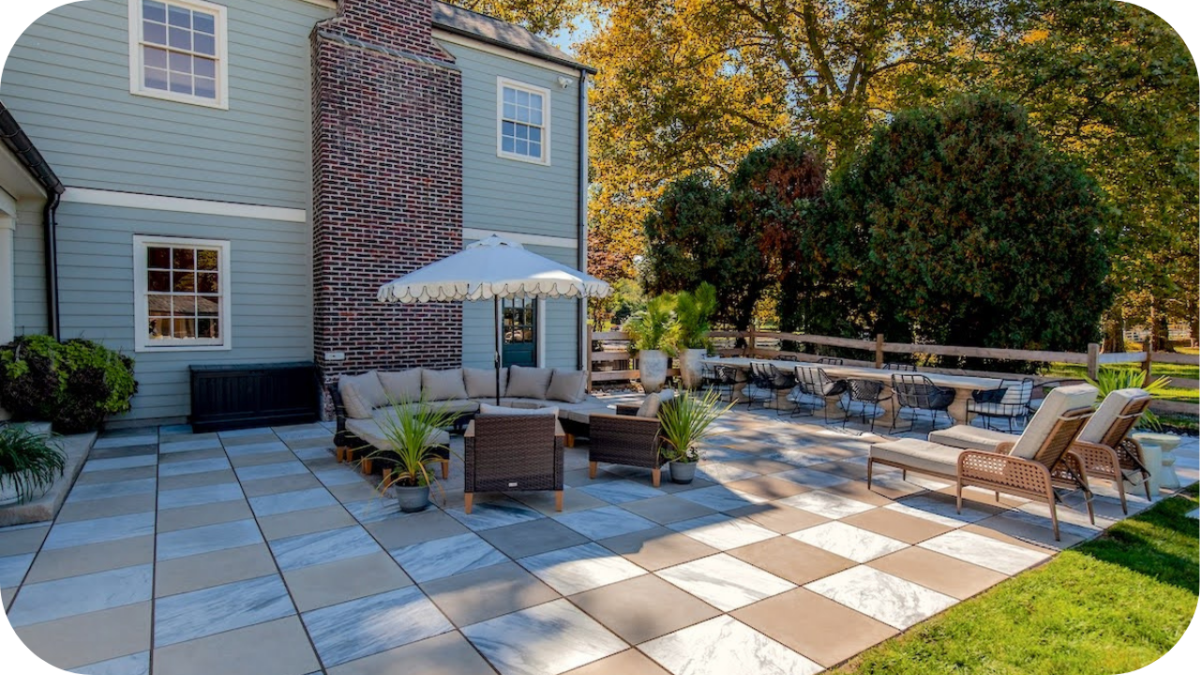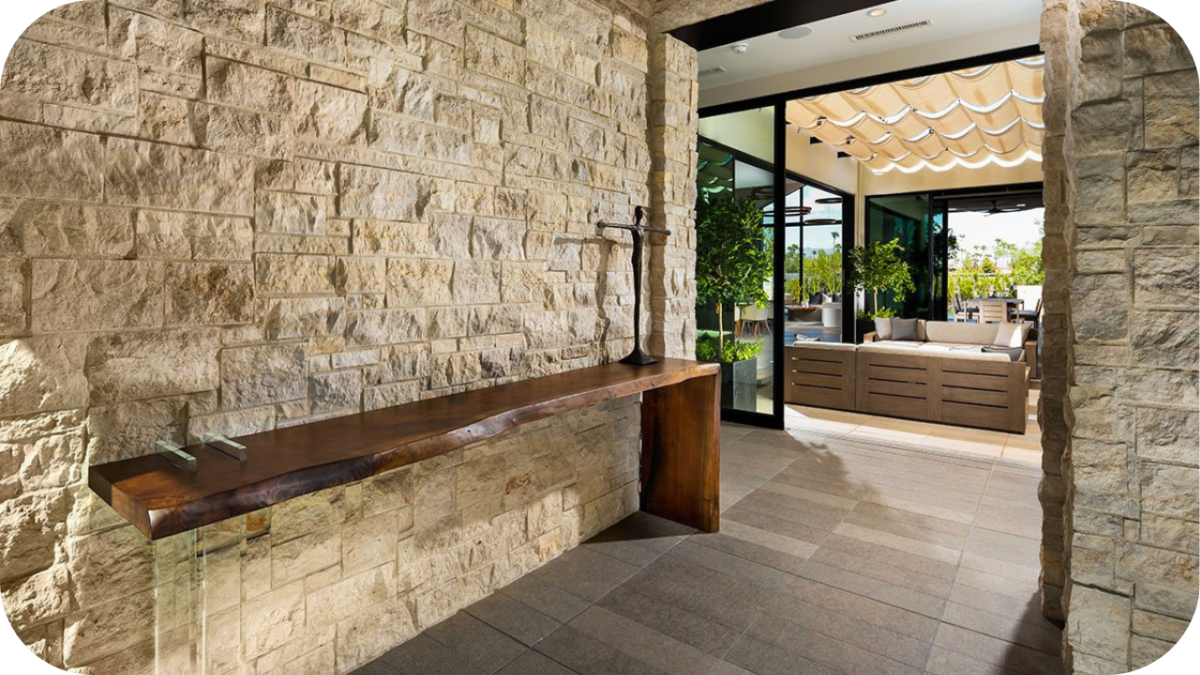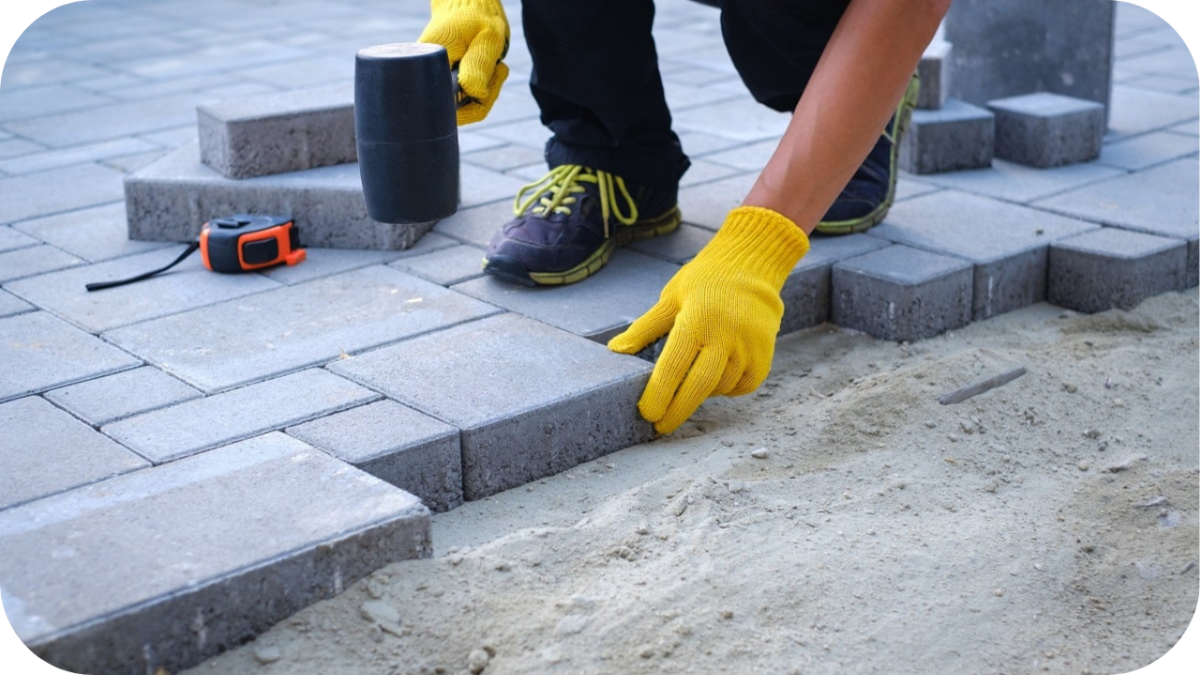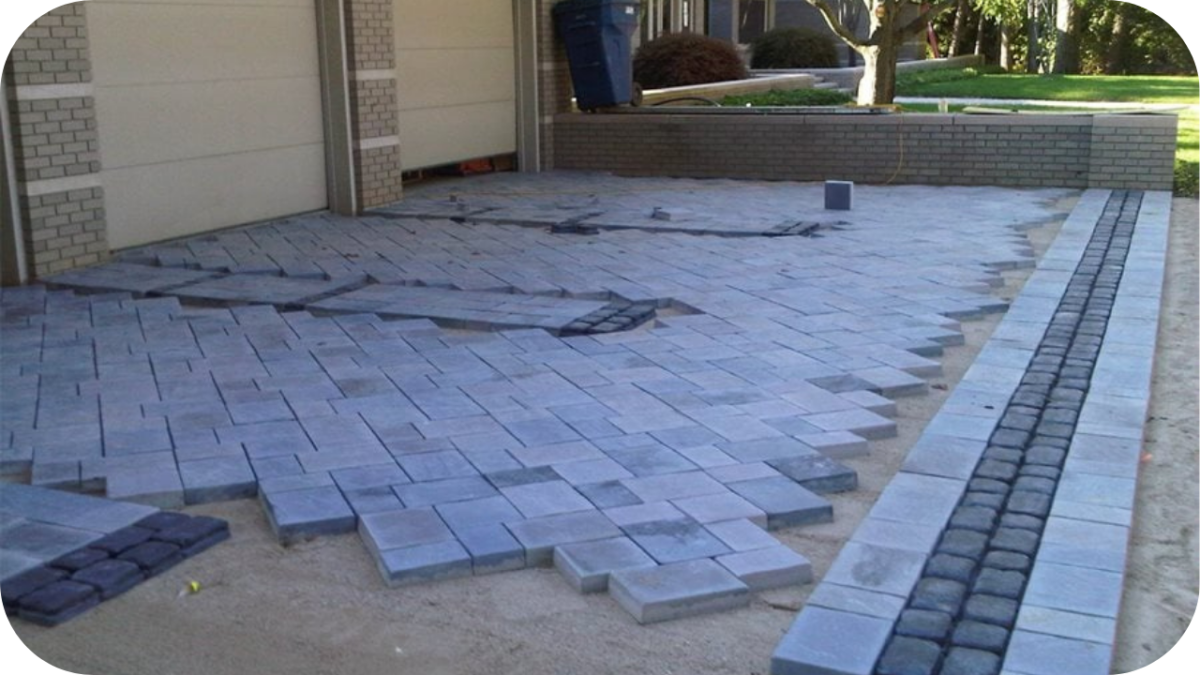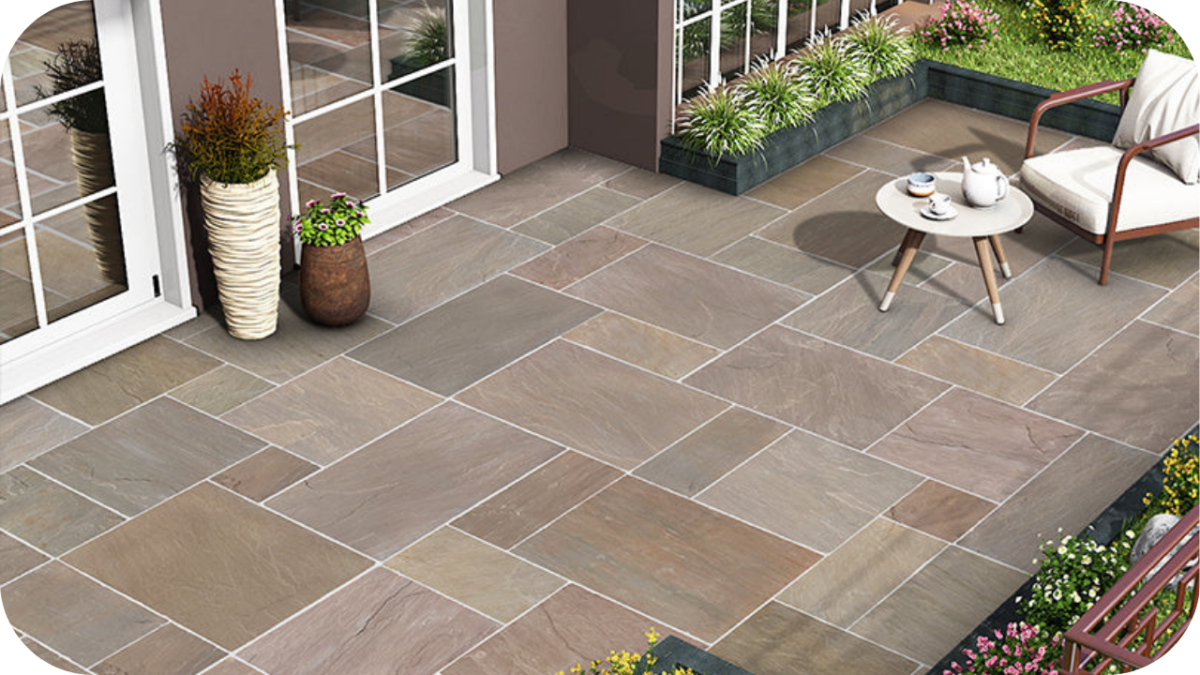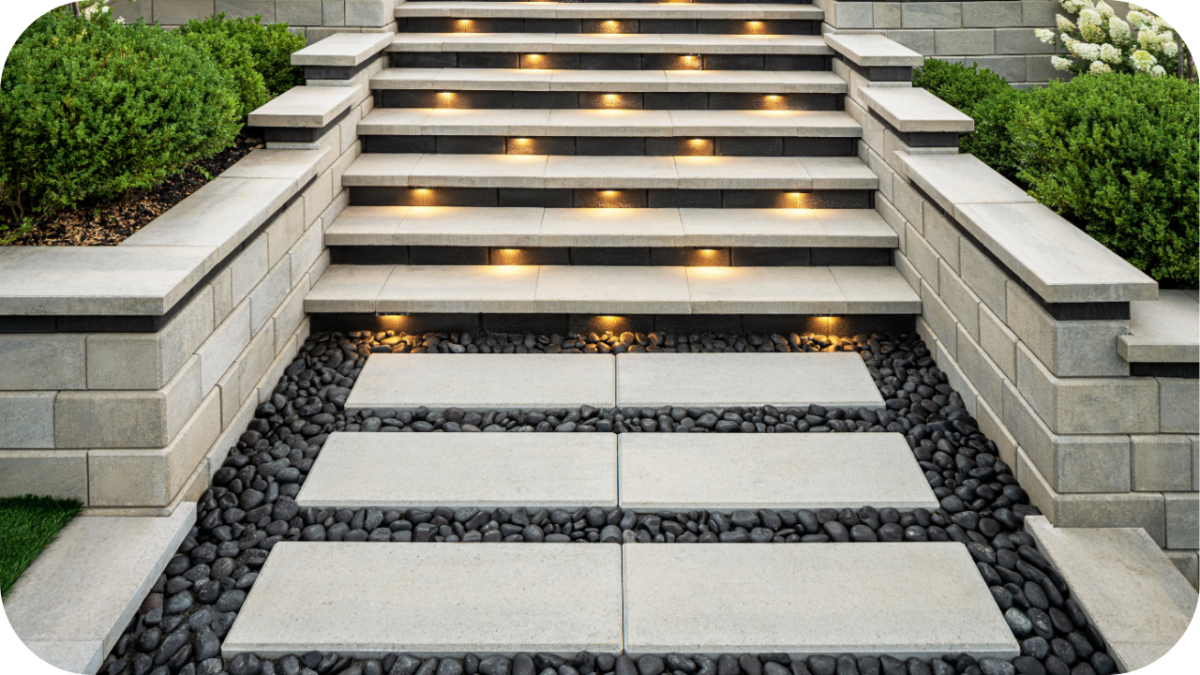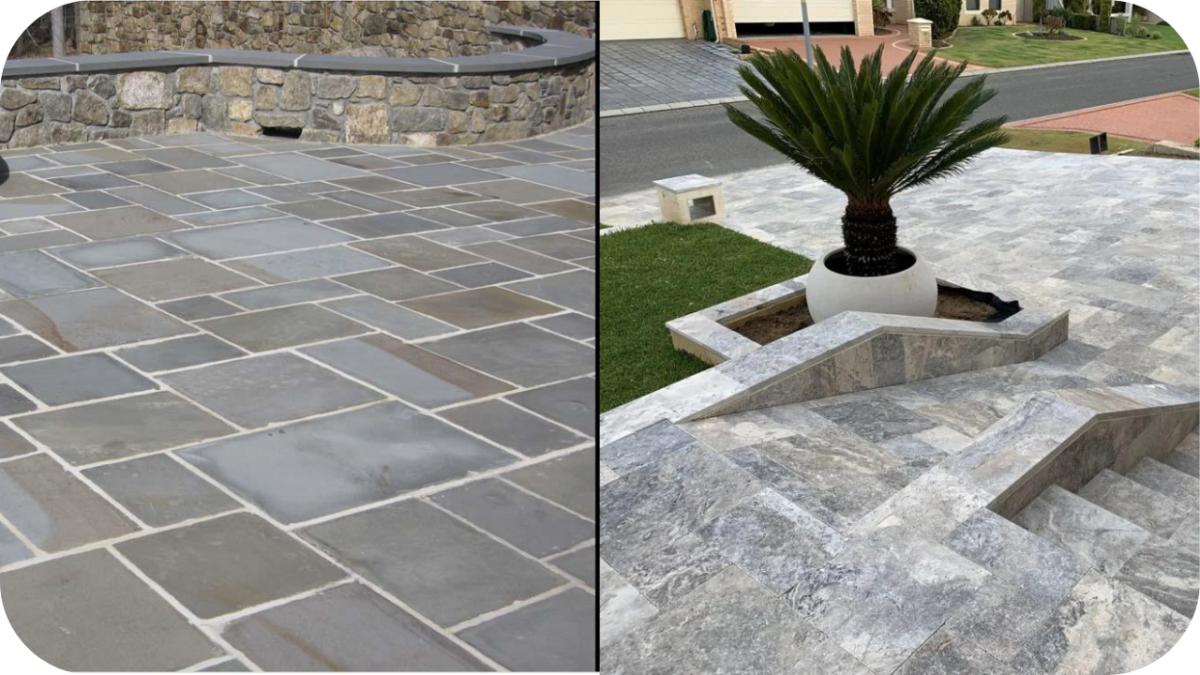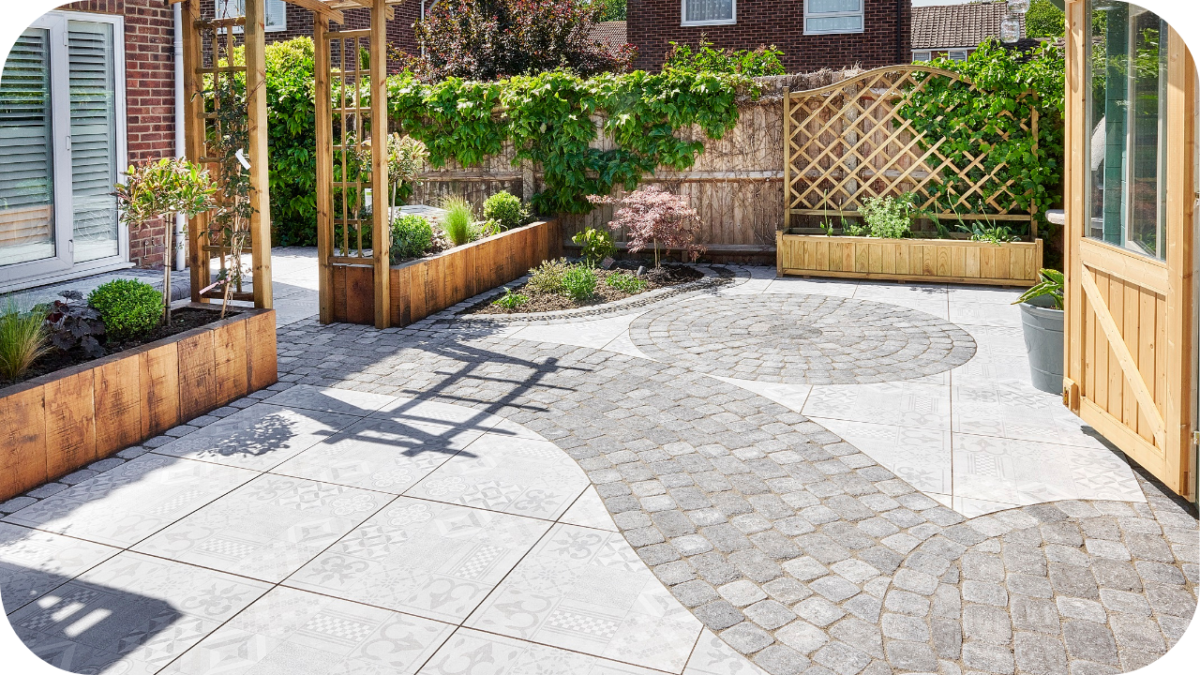Choosing Stone Pavers That Complement Building Facades
The harmony between stone paving and a building’s façade can make or break the visual appeal of any residential or commercial property.
Coordinating pavers with façade materials enhances architectural integrity, creates cohesion, and adds long-term value.
This guide explores how to choose the right stone pavers to complement your building’s exterior, from material pairing to colour matching and layout styles.
Why Cohesion Between Paving and Façades Matters
Achieving cohesion between stone pavers and a building’s façade is key to creating a visually appealing and unified design. When the paving complements the façade material, it establishes a natural flow between the outdoor and indoor spaces.
This harmony enhances the architectural integrity of the property, making the overall design feel more intentional and cohesive. A well-matched combination also improves the kerb appeal, increasing the perceived value of the property.
Whether aiming for a modern, rustic, or classical look, the synergy between the façade and paving elevates the aesthetic of the building. It also prevents visual clutter that may arise from mismatched materials or contrasting tones.
By carefully considering the right paver choice in relation to the building’s façade, you can achieve a balanced and beautiful design that stands the test of time.
Key Factors to Consider When Matching Pavers to Facades
To achieve a cohesive and visually appealing design, it’s essential to consider key factors when selecting pavers for your building’s façade. Here are the crucial elements that will ensure a seamless look.
1. Material Compatibility
Choose pavers that either match or complement the building’s facade material. Pavers that align with the material of the facade create a seamless, integrated look, while contrasting materials can add visual interest when balanced thoughtfully.
2. Colour and Tone Coordination
Ensure the paver colours align with the facade’s tones. Light pavers can contrast with dark facades, while similar tones create a uniform and harmonious appearance, enhancing the building’s overall aesthetic.
3. Texture and Finish Pairing
Match the finish of the pavers with the façade’s texture. Smooth, polished pavers complement sleek, modern facades, while rougher, textured finishes suit rustic or heritage-style facades, adding dimension and visual appeal.
4. Scale and Proportion
Consider the scale of the pavers relative to the size of the building. Large-format pavers work well with grand facades, while smaller stones are better suited for intricate or more delicate designs, maintaining a balanced proportion.
5. Environmental Factors
Factor in the local climate and environmental exposure. Pavers chosen for areas with extreme weather conditions should be durable and weather-resistant, ensuring they perform well and complement both the facade and the surrounding environment.
Best Stone Types for Harmonious Design
Choosing the right stone pavers enhances the architectural aesthetics of your property. Here are the best stone types to complement your building’s façade and create a cohesive outdoor design.
1. Granite
Granite offers exceptional durability and a sleek finish. Charcoal Granite has deep grey-black tones with a flamed finish, perfect for modern outdoor spaces, while Grey Granite offers consistency and a smooth finish for contemporary pavements and driveways.
2. Limestone
Limestone provides natural beauty and warmth, ideal for a variety of outdoor designs. Stamford Limestone has a smooth finish, perfect for contemporary spaces. Sienna Limestone, with its tumbled finish, is perfect for rustic patios and gardens, adding charm and character.
3. Bluestone
Bluestone’s deep blue-grey tones and durability make it perfect for modern outdoor spaces. Flamed Bluestone with its textured finish works well for contemporary pavements, while Honed Bluestone offers a smooth, matte finish, ideal for sleek, refined outdoor areas.
4. Travertine
Travertine offers timeless appeal and versatility. Silver Travertine pavers feature a textured surface for an elegant look, while Ivory Travertine provides warm cream tones, perfect for creating classic and sophisticated outdoor spaces like patios and walkways.
5. Quartzite
Quartzite is known for its beauty and durability, making it perfect for paving. Andorra Quartzite pavers, with their natural split finish, provide an elegant, textured surface. Quartzite’s weather-resistant properties make it suitable for pool surrounds and outdoor living areas, combining beauty with longevity.
6. Marble
Marble provides a luxurious finish to any outdoor area. Ocean Grey Marble has soft grey veining and a honed finish for refined elegance, while Glacier Marble offers crisp white tones and subtle grey veining, ideal for bright and airy spaces.
7. Porphyry
Porphyry pavers, known for their rich earthy tones, add natural texture to outdoor spaces. Filetti Porphyry features narrow, elongated strips for linear designs, while Crazy Porphyry offers vibrant, irregular stone pieces, creating a striking, organic feel for walkways and gardens.
Layout and Pattern Tips for Visual Flow
Achieving a cohesive outdoor look involves more than choosing the right stones; the layout and pattern of your pavers play a crucial role. Here are some key tips.
- Use French Patterns or Modular Paving: Opt for French patterns or modular paving to add visual interest without overwhelming the space, creating an elegant and structured flow in your design.
- Align Paving Lines with Architectural Lines: Align paving lines with the building’s architectural features, like windows and doors, for symmetry and balance, enhancing the overall cohesion between the building and outdoor space.
- Avoid Overly Complex Patterns: If the façade is already textured or intricate, keep the paving layout simple. Choose straight lines or subtle patterns to maintain focus on the building.
- Create Zones with Different Paving Patterns: Define outdoor zones by using different paving patterns for different areas, such as walkways and dining spaces, helping to visually separate areas while maintaining harmony.
- Consider the Flow of Movement: Ensure paving patterns guide movement from one space to another. Curved pathways made with honed bluestone or granite lead the eye and encourage fluid transitions.
- Use Bordering for Structure: Use a different pattern or colour for borders around garden beds or patios. This subtly frames spaces, adding structure without overwhelming the overall design.
Case Scenarios: Matching Stone to Common Façade Types
When selecting the right pavers, it’s essential to consider the type of façade. Here are practical tips for matching pavers with various façade styles to create a cohesive and visually appealing design.
1. Natural Stone Cladding
For natural stone cladding, match the paver and façade stone from the same family to maintain a cohesive look. Alternatively, contrast polished cladding with textured paving for a balanced, dynamic aesthetic.
2. Rendered Walls
Pair smooth or lightly textured pavers with rendered walls to create contrast. Matching tones closely ensures a seamless aesthetic, while subtle texture differences add dimension to the design, enhancing the building’s visual appeal.
3. Brick Façades
Choose pavers that complement the undertones in the brick, such as grey or taupe tones. Opt for stones with variation to avoid a uniform appearance and to introduce natural texture that contrasts with the façade.
4. Timber Cladding
Combine warm stone tones and tumbled edges with timber cladding to create a naturalistic feel. Limestone or granite pavers provide a rustic touch, complementing the earthy tones of the timber and adding visual warmth.
5. Exposed Concrete Façades
For exposed concrete façades, select pavers like Flamed Bluestone or Porphyry that offer natural textures and earthy tones. These pavers create a striking contrast with the clean, raw look of concrete for a modern, industrial feel.
Maintenance and Long-Term Considerations
Maintaining the beauty and longevity of stone pavers and facades requires regular care. Follow these essential tips to ensure your stone surfaces remain in top condition.
- Clean Regularly: Use a mild detergent and warm water to clean stone surfaces. Avoid acidic cleaners and promptly clean spills to prevent staining and maintain appearance.
- Choose the Right Cleaning Products: Opt for pH-neutral cleaners designed for natural stone. Avoid harsh chemicals or abrasives that can scratch or damage the surface, ensuring long-lasting durability.
- Seal and Protect: Apply a stone sealer to porous stones like limestone or travertine to protect them from moisture, dirt, and stains. Reseal every 1-2 years, depending on exposure.
- Prevent Staining and Weathering: Regularly inspect for signs of staining or weathering, especially in high-traffic areas. Sealing helps maintain the stone’s appearance and resilience over time.
- Ensure Proper Drainage: Maintain proper drainage around stone surfaces to avoid moisture buildup. This prevents erosion or staining, particularly around pool areas or fountains.
- Protect During Extreme Weather: Cover exposed stone during extreme weather conditions like heavy rain or hail to preserve its finish and structural integrity.
Conclusion
Choosing the right pavers and façade materials is essential for creating a harmonious and functional outdoor space.
By considering factors like material compatibility, tone, and texture, you can achieve a seamless design that enhances the architecture of your home.
Contact Splendour in Stone for expert advice and premium stone pavers to bring your vision to life.

